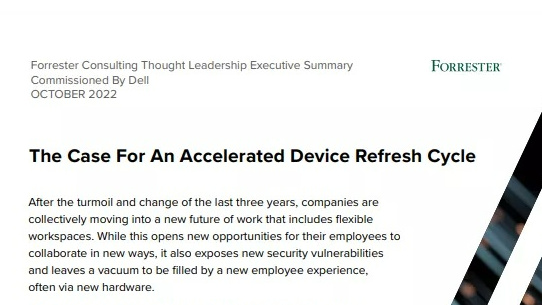
Amazon is a company used to setting the pace for others to follow.
After transforming the bookselling business, and turning its cloud division into a $6 billion enterprise, now the tech giant is setting its sights on the gaming industry.
In all its ventures so far, Amazon's key tenets have been making things affordable and immediate, and it looks like these high-water marks will underpin its very own game engine, Amazon Lumberyard.
We spoke with the company, and industry insiders, to understand what Amazon’s arrival in the highly competitive game engine space means for the game development market.
What’s a game engine, and what’s the fuss about?
From Candy Crush to Call of Duty and Minecraft to League of Legends, every video game requires some form of game engine. It is the underlying central foundation of a game, stitching together programming, art, animation, and more into game we play.
The trouble is, game engines are complex, powerful pieces of kit. At the start of the millennium, the top 3D engines used in the creation of multimillion-dollar PC and console games – Unreal, CryEngine, RenderWare – were the preserve of experienced game studios backed by major publishers.
But over the last 10 years, Unity Technologies led a clutch of engine providers who democratised the software, making it possible for independent teams and even one-man developers to set up and use engines for free – or for monthly fees that can be cheaper than your monthly phone bill.
Sign up today and you will receive a free copy of our Future Focus 2025 report - the leading guidance on AI, cybersecurity and other IT challenges as per 700+ senior executives
This culture of ‘build now, pay later’ has turned the world’s leading engine providers into shrines of software development. So any new entrant to the market has to offer something extra special for game developers to even take notice of it.
Enter Amazon Web Services (AWS), which is offering its Lumberyard game engine for free, direct from its website, and promising developers that it will re-invest any royalty bills they pay on commercial projects into the AWS services that they use.
Only a company with Amazon's clout could even hope to pull off such a bold move.
Launching Lumberyard
On the face of it, launching a game engine does not seem like a risk Amazon would take. But Ian Massingham, AWS chief evangelist for EMEA, tells Cloud Pro that Amazon took the plunge as a result of customer demand.
“One of things that I think is particularly unique about Amazon, and AWS specifically, is we’re very customer-directed in terms of services we create and products and innovations that we work on, he says. "When we have a group of customers asking us to do something – if there are enough of them – we will create a service that addresses the need that those customers have."
Though the engine lives on a local system, Massingham says the way Amazon has built it means developers can consume services via API end-points, which, in his words, “makes it very simple to integrate your game with AWS cloud services”.
For example, a common issue for developers making online multiplayer games is scaling their server fleets while still accruing key user data. Massingham says Lumberyard’s AWS backend makes this process less complicated.
“There’s a general trend here, and it’s not just in gaming, it’s in apps generally: customers want to use cloud-based services as a backend for applications. I’m talking about running services, I’m not talking about running virtual machines in the cloud,” he says.
“That’s one of the key features of Lumberyard: the fact that you can use these AWS servers to add features into your game that are very scalable, durable and don’t put a lot of burden on the developer.”
Lumberyard: Under the hood
A robust, cloud-supported backend is an advantageous proposition. But it is Lumberyard’s core technology that most developers will be eyeing closely, and it is the product with a spotted history.
The foundations of Lumberyard lie in a two-year-old licensing deal – said to be in the region of $50 million – between Amazon and Crytek, the Frankfurt game company behind CryEngine and a number of action games.
Fast-forward to the present and Amazon’s game engine is a composite of three technologies: CryEngine, software from the Amazon-owned studio Double Helix, and AWS.
Lumberyard’s technology is no slouch. Games can be programmed natively in C++. Asset management, character creation, AI, and other core development functions can be created, edited and managed. The engine also supports PCs and consoles out of the gate, while mobile support was added as part of its recent 1.1 update. VR is due later this year.
“Developers want to focus on differentiating gameplay, not building out undifferentiated engine technology,” Massingham says, when we ask why Amazon did not build its own engine from scratch.
“Developers also told us that proven technology is important to them, especially given the complex and expensive nature of building games,” he adds.
Richard Davey, director of Photon Storm, a studio that creates its own web-based game development tools, points out that buying in your foundation in this way could have disadvantages.
“They’ve obviously bought themselves a nice headstart by forking out for CryEngine, but I suspect the technical debt involved in doing that must be phenomenal," he says.
“At least with Unreal and Unity they own the whole flow from start to finish, and, having built it all, understand it implicitly. That’s no slight on the Amazon devs, but one does not simply walk into CryEngine.”
Davey makes a significant point. It is common for game studioes to hire programmers specifically because they have expertise with a particular game engine or programming language.
People wanting to learn how to use a new game engine must read through its documentation and direct questions to its customer service. So can Amazon compete on this front, too?
“You’d think so, right?” says Davey. “But the tutorials released so far are very top-line and quite sparse. It’s early days though, but if you want to capture a community early then you need to feed them with masses of information, in a nice, friendly developer-focused site. A list of PDFs hosted on S3 isn’t going to cut it long term.”
Adam Fletcher, engineering director at Mediatonic, the London studio behind Amateur Surgeon and a bevy of colourful mobile games, is more optimistic about Amazon’s ability to offer support.
“I’ve generally found the AWS documentation to be good. I think the complexity of a game engine does increase the amount of documentation required, and a big challenge is going to be maintaining the documentation for multiple versions of the engine as it evolves,” he says.
“In terms of support, as with most cloud providers, Amazon’s approach is 'the support is there if you’re willing to pay for it'.”
Massingham states that developers can expect quite an extensive library of video tutorials and quick start guides for the service as it grows, while AWS premium support will offer customer service.
Up against the completion
Technical and educational challenges aside, the real test for Amazon will be whether it can convince experienced game developers – who Massingham acknowledges are a proactive group, often with disparate needs – to choose Lumberyard over existing engines, such as Marmalade, Unreal and Unity.
At the Game Developers Conference (GDC) in San Francisco earlier this year, these established engine providers announced a number of new deals with major developers.
Unreal has licensing deals with Rocksteady (Batman: Arkham Knight) and Square Enix (Final Fantasy VII Remake), and is even being used in the VFX and automotive sectors. The UK-created mobile SDK Marmalade is used by the likes of EA, Activision and Angry Birds’ maker, Rovio, while Unity said it now has over four million registered developers worldwide, and supports 22 platforms, including soon-to-been released VR headsets, the Oculus Rift and PlayStation VR.
“Creating a world-class game engine is not an easy undertaking and the best products don’t always win,” Marcos Sanchez, head of global communications at Unity Technologies, tells Cloud Pro.
“Having a great product is just the first step. After that it’s about how the company approaches not just the market, but also both new and existing customers. At Unity, we have three guiding principles: democratise development, solve hard problems and make developers successful. In order to accomplish those things, we are constantly trying to create the right mix of products, services and community building.”
Massingham believes Lumberyard’s ability to build cloud-connected titles, alongside the recently launched Amazon GameLift – a dedicated service for the deployment and management of session-based multiplayer games – will be what separates Amazon’s offering from the competition.
“We’ve already got a lot of customers who are using AWS to develop and operate games,” he says, citing Clash of Clans maker Supercell and Angry Birds studio Rovio as two examples.
“We see that more and more games are becoming connected, and over time, we believe that more developers will use the cloud to connect players and access the compute and storage beyond what a single device can provide.”
In it for the long haul?
Even with AWS’s cloud backing, Mediatonic’s Fletcher believes Amazon is unlikely to have an impact on the top-end of the game market yet, due to the cost of reskilling teams.
“The tight integration with AWS can offer a lot of advantages, but only time will tell if those advantages are big enough to attract developers away from their established toolchains. Lots of different factors need to be considered when choosing an engine so the cloud features alone are unlikely to drive adoption. It has to be a compelling choice in all other areas,” he says.
Photon Storm’s Davey is also keeping a level head about Amazon’s prospects.
“It all depends if they’re capable of building a community around [Lumberyard]," he believes. "Unity and, to a lesser extent, Unreal have highly active communities. There are regular dev group meet-ups around the world, and a vast range of community authored tutorials and plug-ins. Unity themselves foster this and curate an impressive showcase."
He adds: “It doesn’t matter how ‘awesome’ the tech is. Unless you’re in charge of a large and self-sustaining team, then you need the community around you. If Amazon invest in building this, then yes, it has the potential to disrupt things. If they expect it to just happen, then in a year’s time we’ll all be saying ‘Lumberwhat?’”
Amazon faces a tough challenge in proving to game developers that Lumberyard is just as capable as its competitors. But tough as the challenge is, Massingham says Amazon isn’t backing out anytime soon.
He contends: “Everything Amazon does is for the long haul. One of our key values is long-term thinking. It’s something that we do a lot of here. We don’t chase short-term success – we believe that if we can change our systems quickly, and iterate with pace, then we will build a product that will be valued by customers.
“Our overall focus is to make game creation easier and reduce the cost of game development. We’re hopeful that if we do that, then we can also create a sustainable business model for ourselves as well.”
-
 Google drops $4.75bn on data center and energy firm Intersect
Google drops $4.75bn on data center and energy firm IntersectNews The investment marks the latest move from Google to boost its infrastructure sustainability credentials
-
 OpenAI says prompt injection attacks are a serious threat for AI browsers
OpenAI says prompt injection attacks are a serious threat for AI browsersNews OpenAI details efforts to protect ChatGPT Atlas against prompt injection attacks
-
 'Digital hide-and-seek': Workers are wasting hundreds of hours a year sourcing the information they need to carry out their role
'Digital hide-and-seek': Workers are wasting hundreds of hours a year sourcing the information they need to carry out their roleNews Knowledge workers globally are wasting a quarter of their working week tracking down information, new research from Atlassian has revealed.
-
 Untethered: How CIOs and CISOs are paving the way for the new hybrid workforce
Untethered: How CIOs and CISOs are paving the way for the new hybrid workforceWhitepaper Effective techniques to transition from exposed legacy infrastructure to an effective zero trust strategy
-
 Unlocking the power of your digital services
Unlocking the power of your digital servicesSponsored Businesses have invested significant cash into technology since COVID-19, but are they really getting their money's worth?
-
 Delivering fast and secure digital experiences for the modern hybrid workforce
Delivering fast and secure digital experiences for the modern hybrid workforceWhitepaper A new approach to digital experience monitoring that can monitor the health of all systems
-
 Collaboration is the glue that holds your business together
Collaboration is the glue that holds your business togetherSPONSORED A combination of productivity tools and cloud telephony can enable the best from your workforce
-
 The future of work and the forgotten workforce
The future of work and the forgotten workforcewhitepaper How to deploy a mobile-first strategy so no one gets left behind
-
 The case for an accelerated device refresh cycle
The case for an accelerated device refresh cycleWhitepaper Achieving a more cost-effective device lifecycle overall
-
 Employees are choosing how they work
Employees are choosing how they workWhitepaper And with the right secure digital strategy, this could be a great thing for your business: today and far into the future